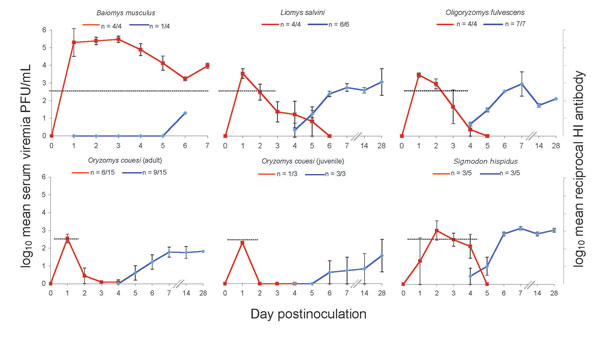Volume 15, Number 4—April 2009
Research
Experimental Infection of Potential Reservoir Hosts with Venezuelan Equine Encephalitis Virus, Mexico
Figure 2

Figure 2. Mean viremia profile (red lines) and mean hemagglutination inhibition (HI) antibody profile (blue lines) of 5 species of wild rodents after experimental infection with 3 log10 PFU of Venezuelan equine encephalitis virus type-IE, strain MX01-22. Black dashed lines indicate approximate mosquito infection viremia threshold for the enzootic vector Culex (Melanoconion) taeniopus. Fractions represent proportion of total cohort that had measurable response. Data for days 42 and 66 (not shown) did not differ significantly from data for day 28. Error bars indicate SEM.
Page created: December 10, 2010
Page updated: December 10, 2010
Page reviewed: December 10, 2010
The conclusions, findings, and opinions expressed by authors contributing to this journal do not necessarily reflect the official position of the U.S. Department of Health and Human Services, the Public Health Service, the Centers for Disease Control and Prevention, or the authors' affiliated institutions. Use of trade names is for identification only and does not imply endorsement by any of the groups named above.